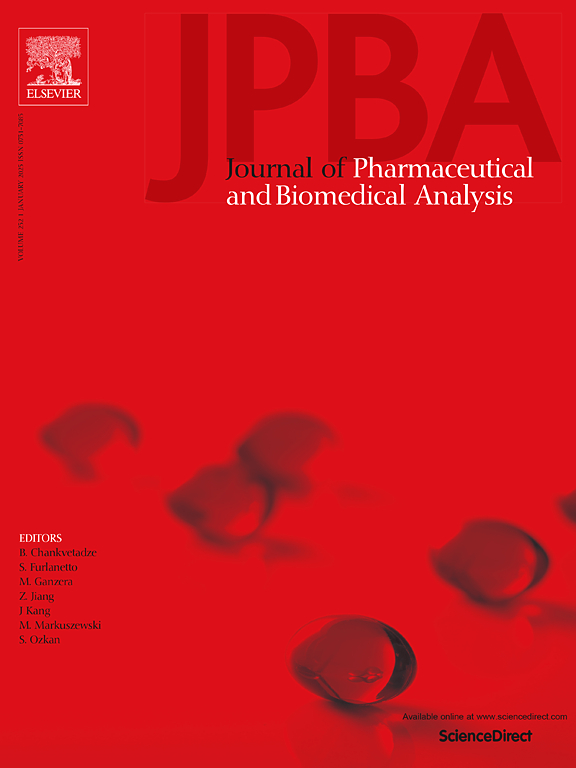Identification and characterization of tubulin as Ga(III)-binding protein in T24 cells
IF 3.1
3区 医学
Q2 CHEMISTRY, ANALYTICAL
Journal of pharmaceutical and biomedical analysis
Pub Date : 2025-03-27
DOI:10.1016/j.jpba.2025.116842
引用次数: 0
Abstract
Gallium-based metallic drugs and agents have been widely applied for the diagnosis and treatment of diseases such as non-Hodgkin's lymphoma (NHL), but there are few reports on the potential Ga(III)-binding proteins and the related cytotoxic mechanisms for Ga(III). Herein, by using human urinary bladder cancer T24 cells as a model, we identify and report that tubulin is a Ga(III)-binding protein target in T24 cells. Our analyses, including the employment of a series of methods based on immobilized metal affinity chromatography (IMAC), cellular thermal shift assay (CETSA), and immunofluorescence experiments, collectively explained this finding. Our results suggest that the binding of Ga(III) to tubulin led to significant changes in the morphology and distribution of microtubules in cells. The blocked microtubule formation or microtubule depolymerization as a result of the binding of Ga(III) to tubulin may be an important molecular mechanism by which Ga(III) exerts its cytotoxic effects in T24 cells to inhibit tumor cell growth.
求助全文
约1分钟内获得全文
求助全文
来源期刊
CiteScore
6.70
自引率
5.90%
发文量
588
审稿时长
37 days
期刊介绍:
This journal is an international medium directed towards the needs of academic, clinical, government and industrial analysis by publishing original research reports and critical reviews on pharmaceutical and biomedical analysis. It covers the interdisciplinary aspects of analysis in the pharmaceutical, biomedical and clinical sciences, including developments in analytical methodology, instrumentation, computation and interpretation. Submissions on novel applications focusing on drug purity and stability studies, pharmacokinetics, therapeutic monitoring, metabolic profiling; drug-related aspects of analytical biochemistry and forensic toxicology; quality assurance in the pharmaceutical industry are also welcome.
Studies from areas of well established and poorly selective methods, such as UV-VIS spectrophotometry (including derivative and multi-wavelength measurements), basic electroanalytical (potentiometric, polarographic and voltammetric) methods, fluorimetry, flow-injection analysis, etc. are accepted for publication in exceptional cases only, if a unique and substantial advantage over presently known systems is demonstrated. The same applies to the assay of simple drug formulations by any kind of methods and the determination of drugs in biological samples based merely on spiked samples. Drug purity/stability studies should contain information on the structure elucidation of the impurities/degradants.

 求助内容:
求助内容: 应助结果提醒方式:
应助结果提醒方式:


